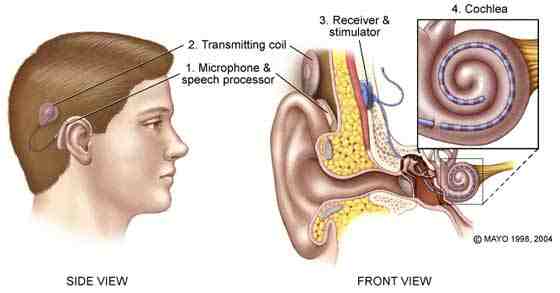Cochlear Implant
BSEE from UC Berkeley (1969) & MSEE from Stanford (1972).
Go Bears! The Cal fight song is
HERE.
I spent 35 years in Hewlett Packard & Agilent Research &
Development working to extract the maximum performance from imperfect systems.
I've done this by creating Window's software, DSP software, systems design, plus
digital and analog hardware design. This led to 13 patents.
Professor Dorman at Arizona State University has made me an
Adjunct professor in Speech & Hearing Science as a result of my CI work.
I became a CI candidate in July 2004, and was implanted January
2006. I have some hearing in my unimplanted ear and it degrades badly
starting at 500 Hz and is gone by 1.2 kHz.
My goal is to improve the music experience for CI users, and
significantly reduce having to relearn to hear after getting a CI.
I have an Advanced Bionics implant, and have reverse engineered
the interface between the implant and the external speech processor. I
then built my own external processor that's optimized for doing psychoacoustic
experiments.
I first worked to get simple music like John Denver to sound
good. I did that and expected speech to be pretty good. It was not,
and more complex music wasn't too great either.
So I worked on making speech better, and in the process, more
complex music also improved.
Finally after being implanted for five and a half years, I've
begun to wear my CI regularly (starting July 2011) and dealing with the CI in
the real world with background noise and other imperfect listening conditions.
How do you improve performance in difficult situations?








No comments:
Post a Comment